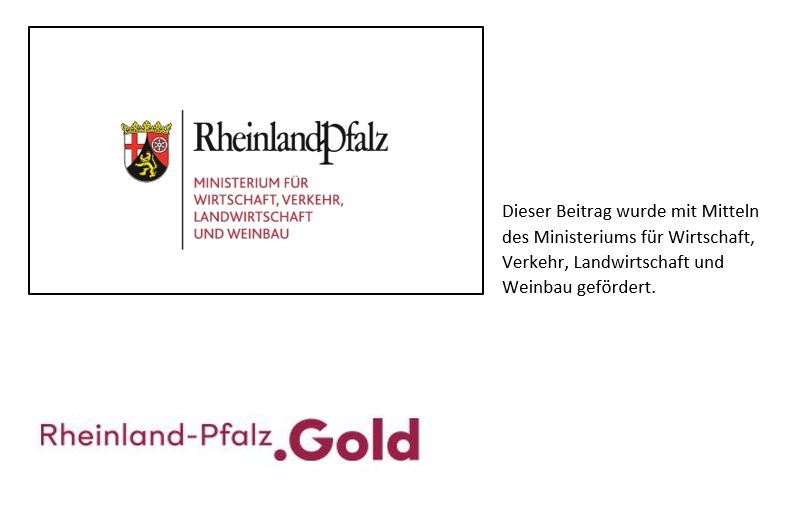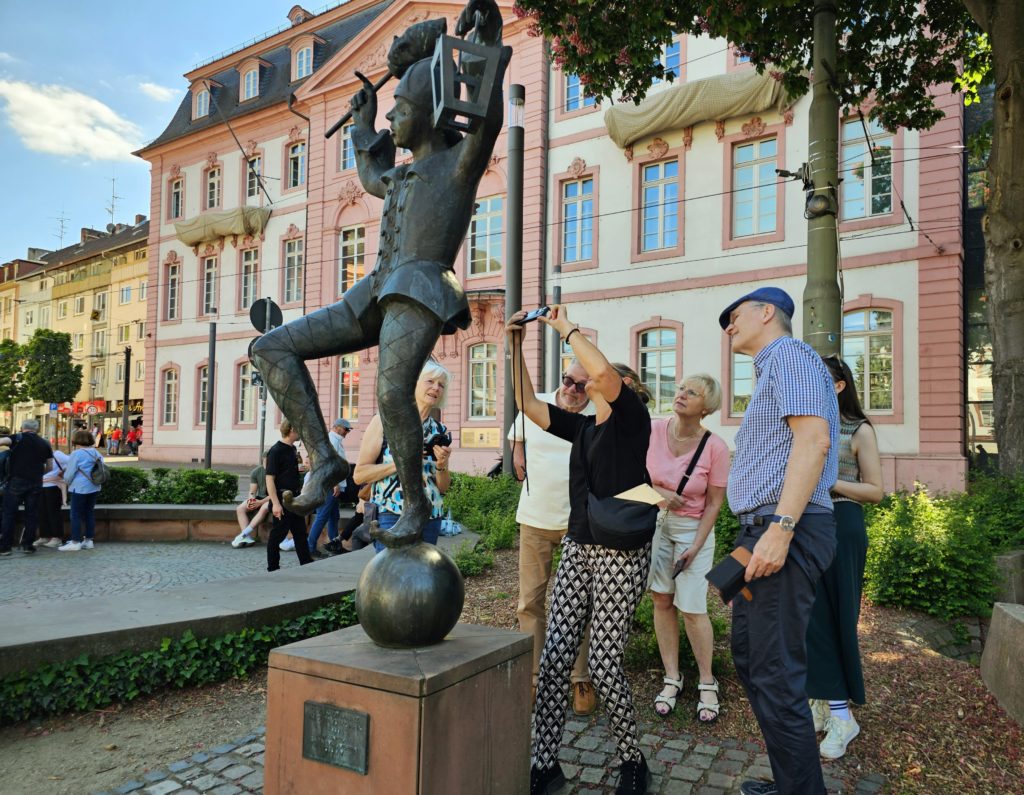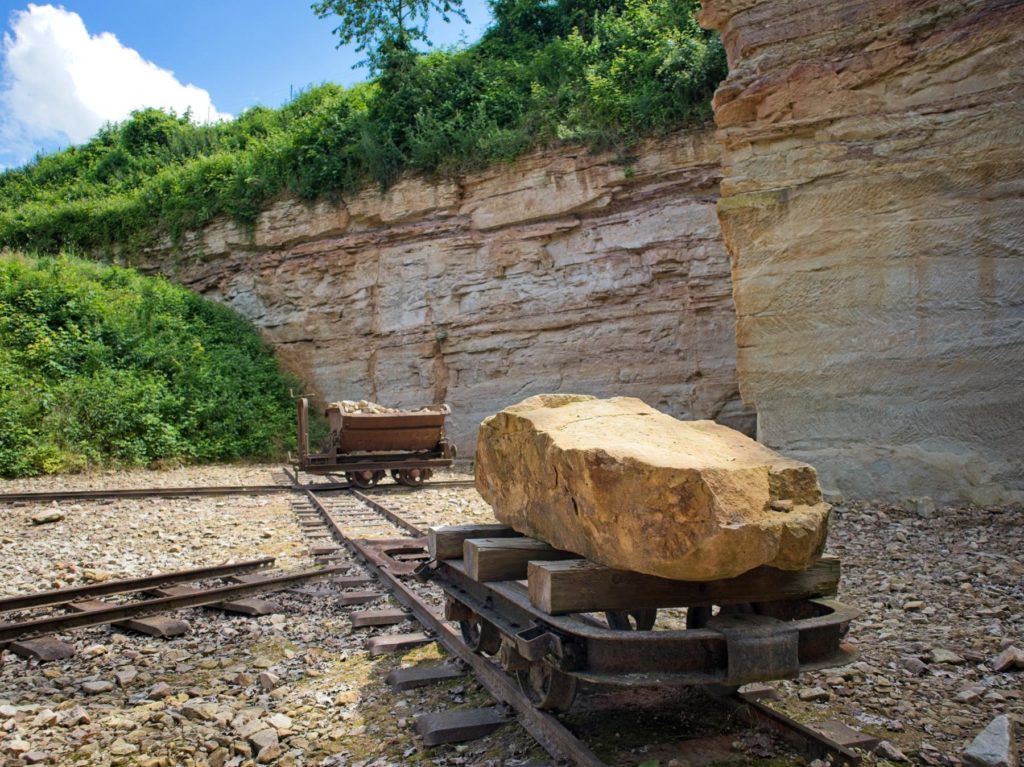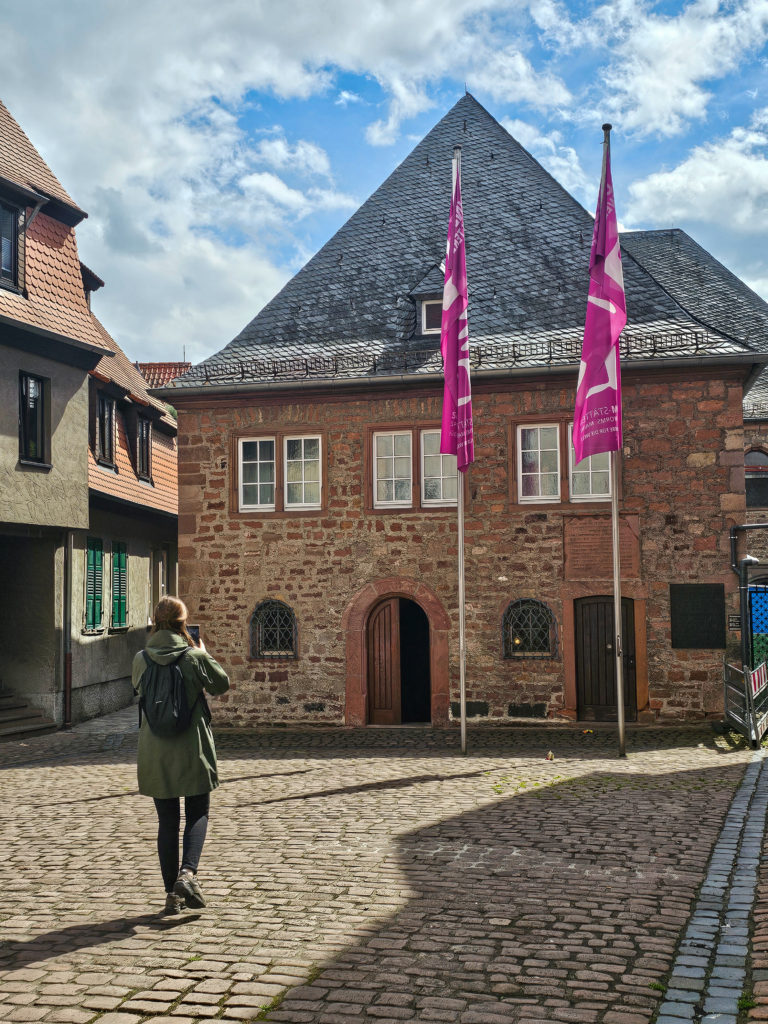Since 2021, the SchUM sites are UNESCO World Heritage Sites. I must unfortunately admit SchUM was previously unknown to me and I first needed a little introduction to the topic. Because I'm sure many of you feel the same way and we absolutely have to change that, I have a guest tour each through the Jewish quarter and cemetery in Worms and about the Jewish cemetery in Mainz and tell you what you can discover there.
A guided tour through Jewish Worms
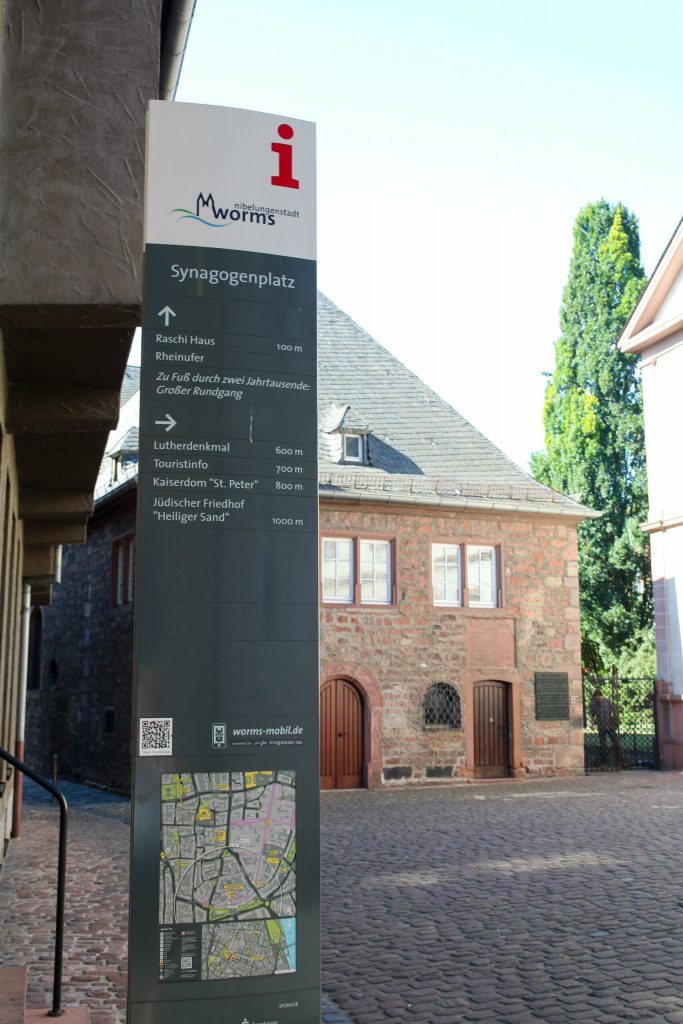
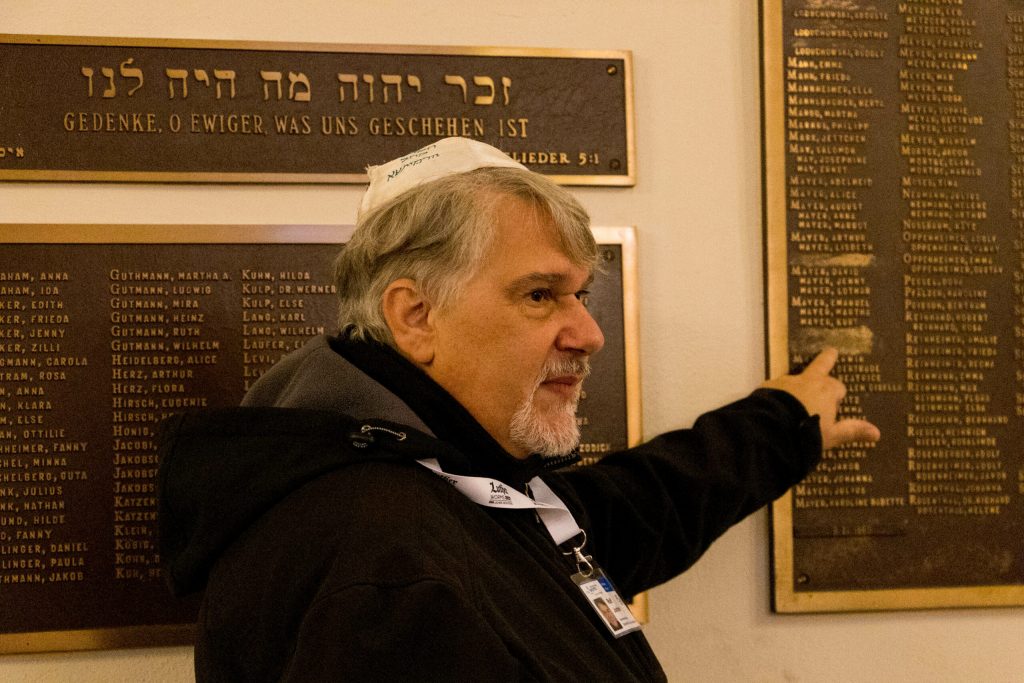
With the tour guide Rolf Jochum I experience the SchUM sites in Worms and learn a lot about the 1000-year history of the Jews in Worms and on the Rhine. The good news hovers over our entire tour - SchUM is a World Heritage Site. A joyful announcement that the cities have been working towards for 16 years and that sends an important message: the history of Judaism on the Rhine is worth protecting. The prerequisites for World Heritage status are influence on architecture, a living and continuous tradition, and evidence of urban life or an urban neighborhood. The SchUM sites fulfill all of these requirements.
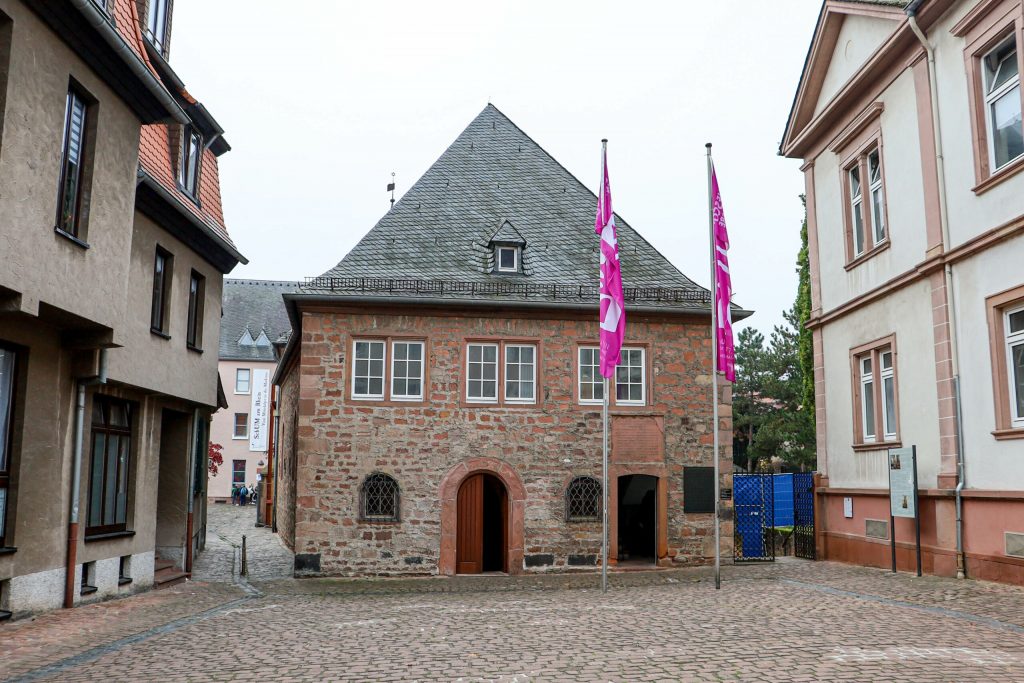
We start our tour in the middle of the Jewish quarter in Worms on the open square in front of the synagogue. In the background I can see the view of the Jewish Museum in the former Rashi House already catch. A great museum, which has renewed its exhibition since the recognition as a UNESCO World Heritage Site and explains many details and features also around SchUM and makes it possible to experience.
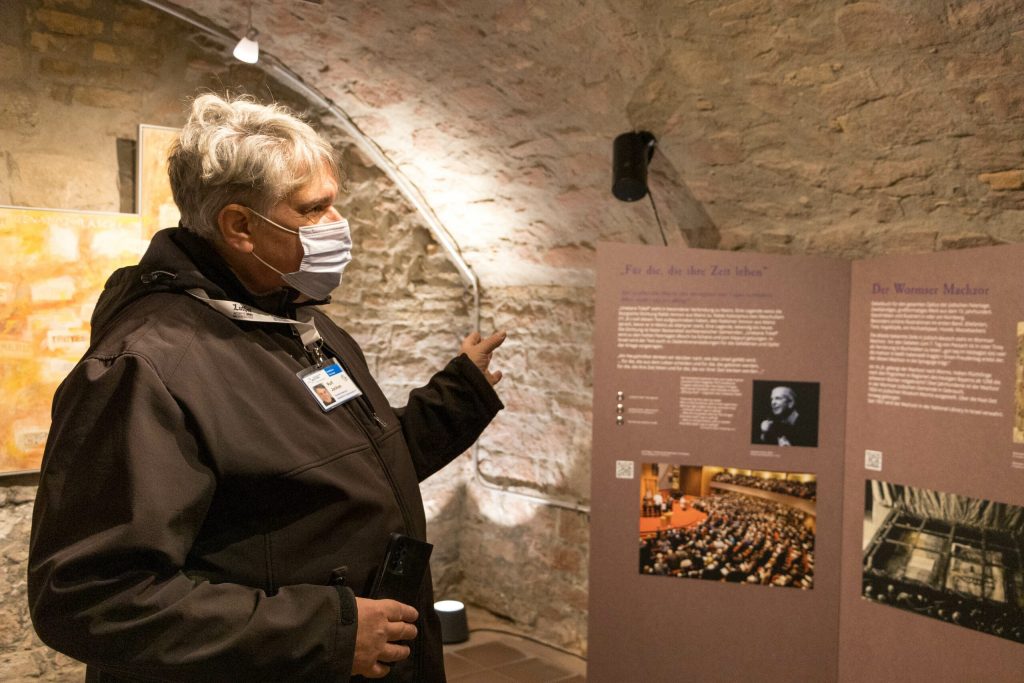
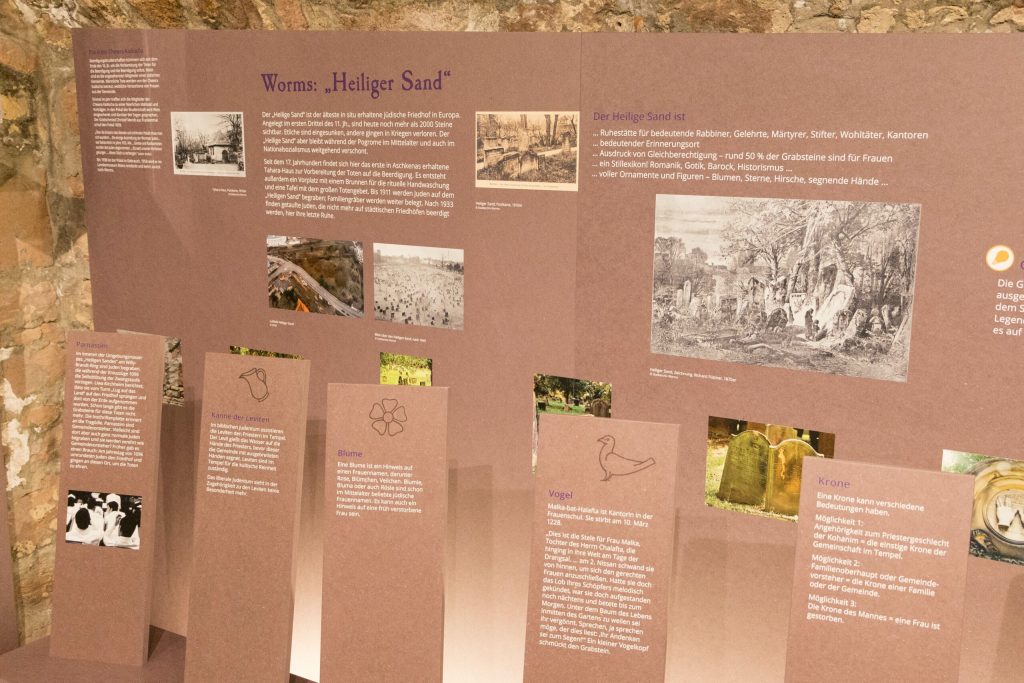
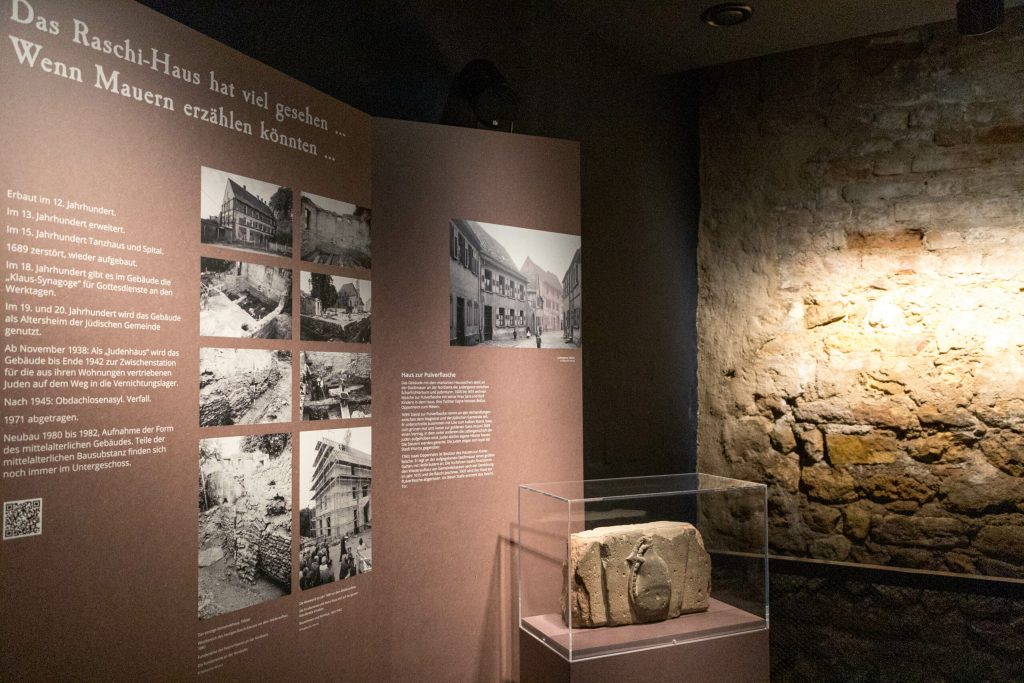
I notice directly that in this part of Worms there are still cobblestones and sections of the city wall are preserved. Small details that make it easier for Mr. Jochum to create a picture in my mind of the city of the city 1000 years ago.
What exactly everything looked like back then and when the first Jews lived in Worms and when they founded a community is difficult to comprehend and research today. Every time a new piece of writing or a find is discovered, the puzzle is put together further. The UNESCO World Heritage status is important for this as well. History can be researched more intensively and prepared for people, for us, so that we can experience it.
1000 years through history
From 960 and 980 documents have been found in Cologne that speak of Jews who came from Worms. However, proof of a Jewish community is only found in the foundation tablet of the synagogue from 1034. For the foundation of a synagogue, at least 10 heads of families were needed. If we assume a normal size of the families of that time, then 60-70 Jews lived in the town at that time. Therefore, there must have been a Jewish community in Worms by 1034 at the latest.
The synagogue was built, as was customary at that time, in the second row in the gardens behind the houses. Consequently, the large open space where we stand today did not exist. As usual for that time, the Jewish quarter was also densely built and kept growing. Even if the name Jewish quarter suggests it, the Jews were not obliged to live only in this part of Worms for 1000 years. Even if we actually want to talk about the history of the Jews, their faith and the development of the ShUM, we always come to the point where we talk about the relationship of the Christians and the Jews. This part simply belongs inevitably to the history of the Jews on the Rhine. Mr. Jochum emphasizes, however, that a guided tour of SchUM and the Jews in Worms is not only about the Third Reich and the Night of Broken Glass, to which the Jewish synagogue also fell victim. Rather, it is about the life of the Jews and how strongly it is connected to Worms, about the spirit and the stories of the people who lived here, and about how SchUM has radiated throughout Germany to this day. Again and again there are little stories and anecdotes to tell and even if they seem rationally implausible, the point is not the truth of the tales, but the thought behind them. "That is the spirit of SchUM," is how Mr. Jochum describes it.
Our guided tour brings us after the tour through the small alleys then also in the Synagogue. Mr. Jochum puts on his kippa and leads me through the rabbi's house and the women's shoe into the synagogue. By the way, a head covering is obligatory for all men in the synagogue and in the cemetery, you should definitely remember that. I take a seat on one of the wooden benches and Mr. Jochum explains to me all the details of a service and the synagogue. The synagogue burned down and was destroyed, however, it was rebuilt according to the old model and as the first synagogue in Germany after the 2nd World War it was rededicated in 1961.
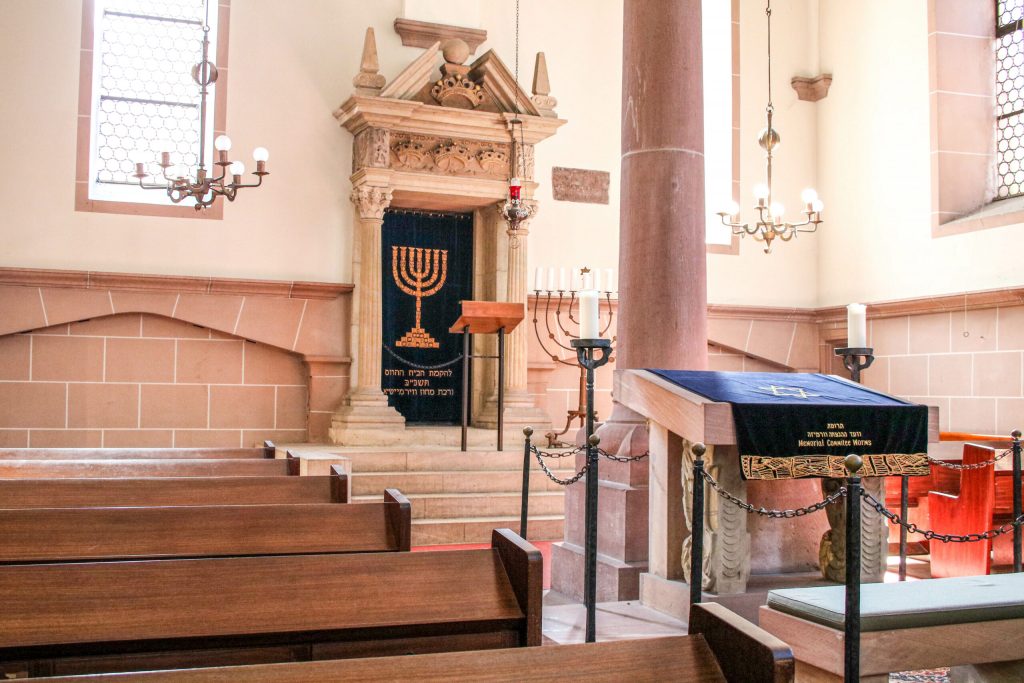
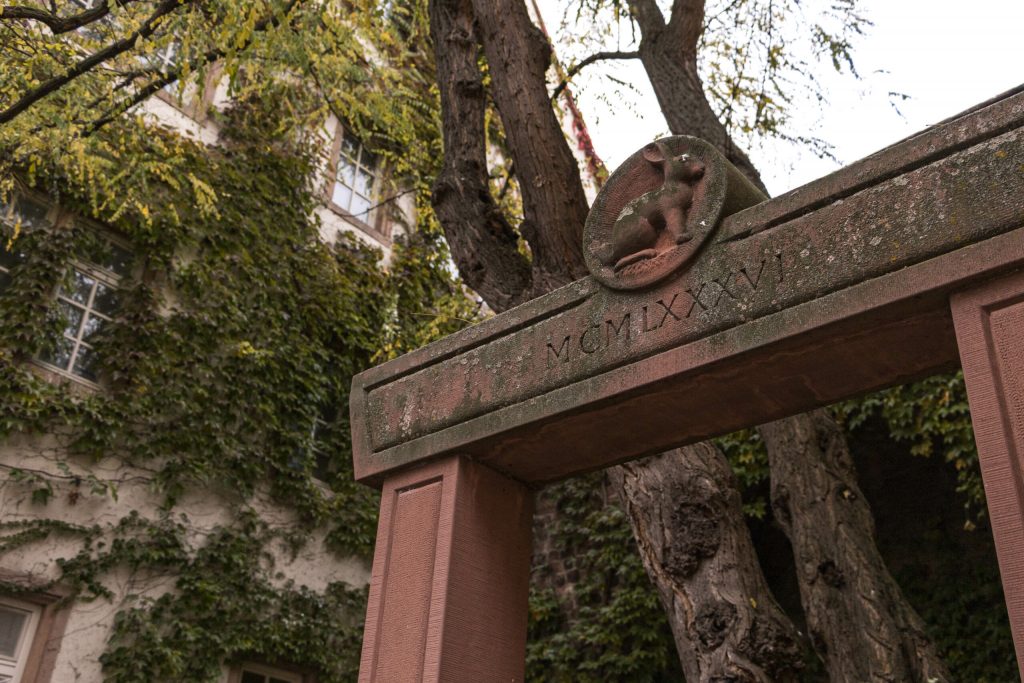
Through Worms to the Holy Sand Cemetery
As the last point of the SchUM sites here in Worms we visit the Holy Sand Cemetery. For this we have to leave the Jewish quarter and walk past the cathedral and the Luther monument through the city. The Jewish cemetery lies wide and peaceful before us. On a large, hilly meadow many stone gravestones rise up. A few of them have toppled over or sunk into the ground. A completely normal picture, as Mr. Jochum explains to me. If the stones fall over or sink into the ground, this is what God wants. Only if man has intervened and changed something, then this may be repaired. With the trained eye of the tour guide, we notice the changes in the shapes of the stones and also the more pompous gravestones, which testify to the newer part of the cemetery and the adaptation to Christianity. At the very back of the cemetery we can look down on the Rabbi's Corner, where the rabbis were buried already 1000 years ago. And right here it stands, the oldest gravestone from 1058 of the Holy Sand Cemetery and the stone that makes the cemetery the oldest Jewish cemetery in Europe. A title for which Worms is in dispute with Mainz.
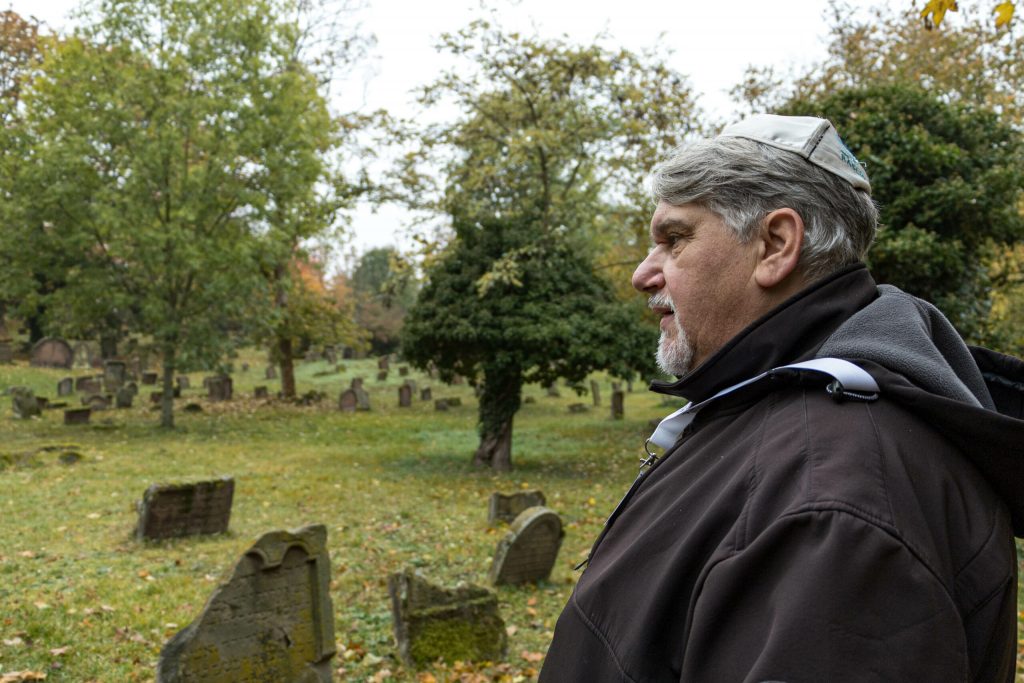
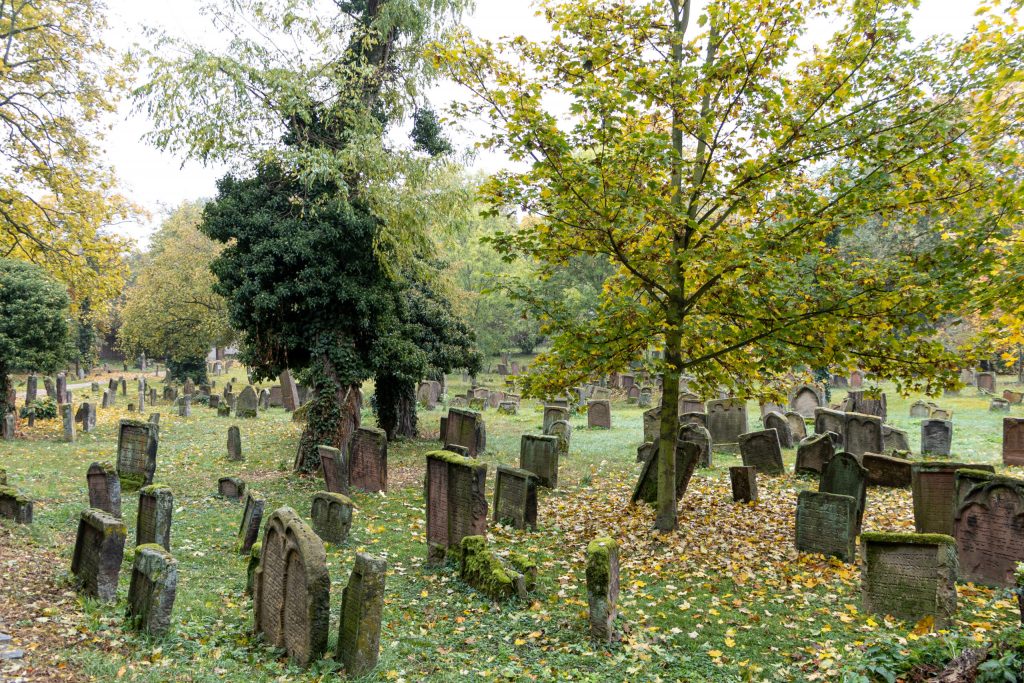
At this point our tour in Worms ends and for me it goes on to Mainz. If you would also like to join a guest tour, then take a look at the Website of the city of Worms by. Otherwise you can visit the Holy Sand Cemetery also at the Opening hours visit and tell you about the SchUM app of the city of Worms through the Jewish quarter.
On the trail of SchUM in Mainz
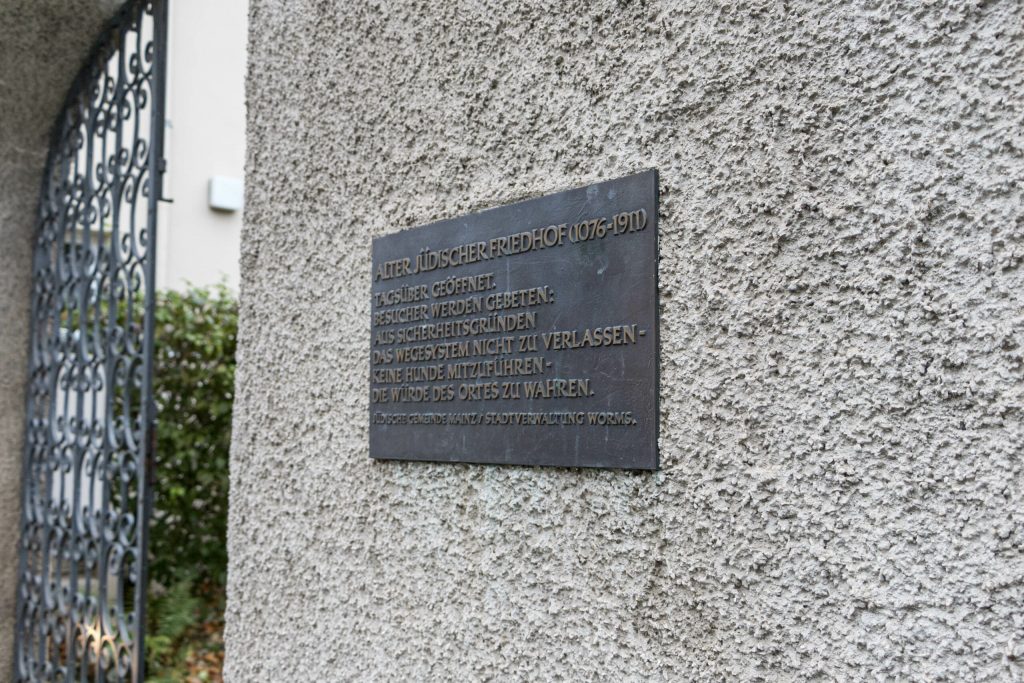
Of course, I also took a guided tour in Mainz over the old Jewish cemetery visited. Unfortunately, not much of the Jewish life of 1000 years ago is left in Mainz. The synagogue was rebuilt and therefore does not count as a SchUM site or UNESCO World Heritage Site. However, the designation as a World Heritage Site should give the starting signal for a new visitor experience of the SchUM sites here in Mainz. A visitor center is being planned here at the Jewish cemetery.
Until then, I walk with the tour guide Claudia Maria Strehl through the cemetery and listen to the history of the Jews in Mainz. The first Jewish community in Mainz was mentioned as early as 917, and so one is sure, the history of Judaism on the Rhine began in Mainz.
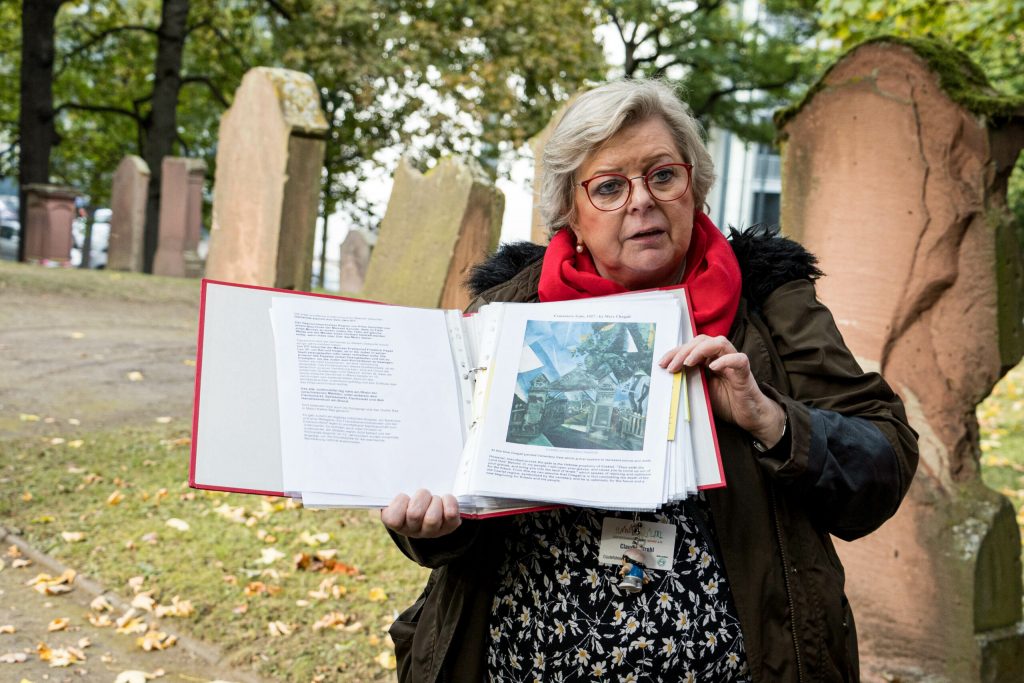
Mainz Cemetery Judensand
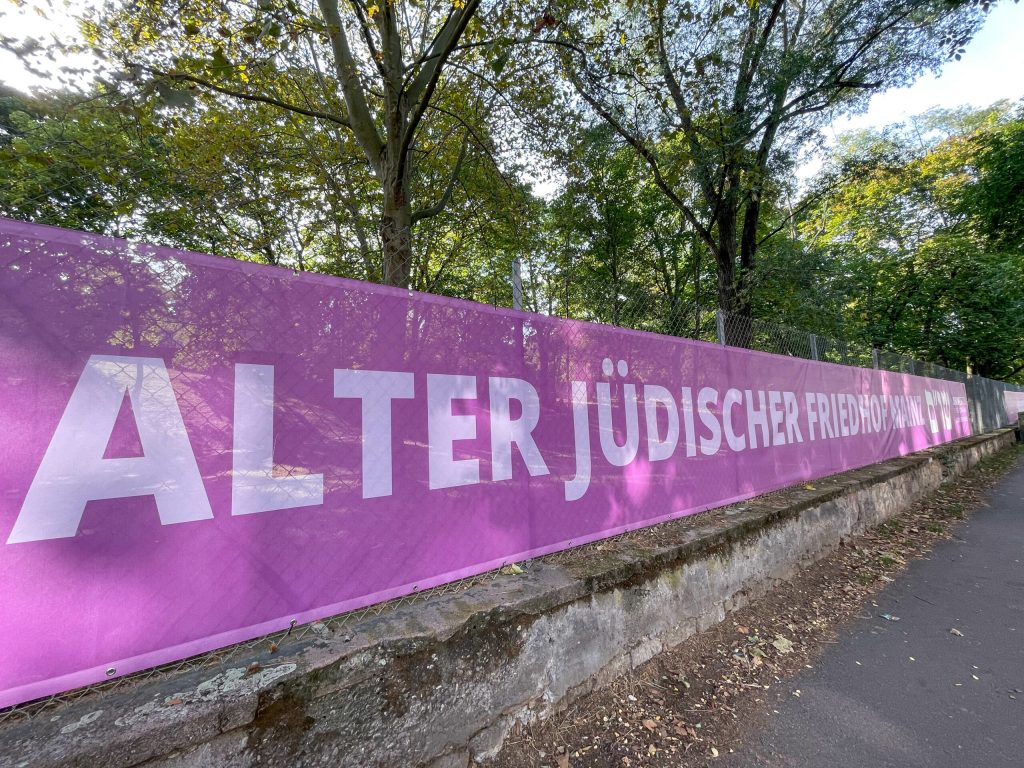
The history of the Jewish cemetery in Mainz goes back to the year to the year 1012, when a Jewish couple bought the plot for the community. for the community. Thus, the cemetery here in Mainz is demonstrably older than the one in Worms, but the oldest gravestone from the Mainz cemetery with the death date 1049 is no longer here in the cemetery, but in the Landesmuseum Mainz. A special feature, because gravestones have a special meaning in Judaism, just as the entire special meaning in Judaism, just as the entire burial culture has its differences from Christianity. from Christianity. When a Jew is buried, his place in the cemetery belongs to him for eternity. cemetery for eternity. This is also the reason why we can admire here so many so so many old stones. The most important thing on the gravestone is the name of the deceased. This belongs written down for eternity. Because the graves are always for eternity, it is very important that you always stay on the marked cemeteries you always stay on the marked paths and do not crisscross the meadow. across the meadow.
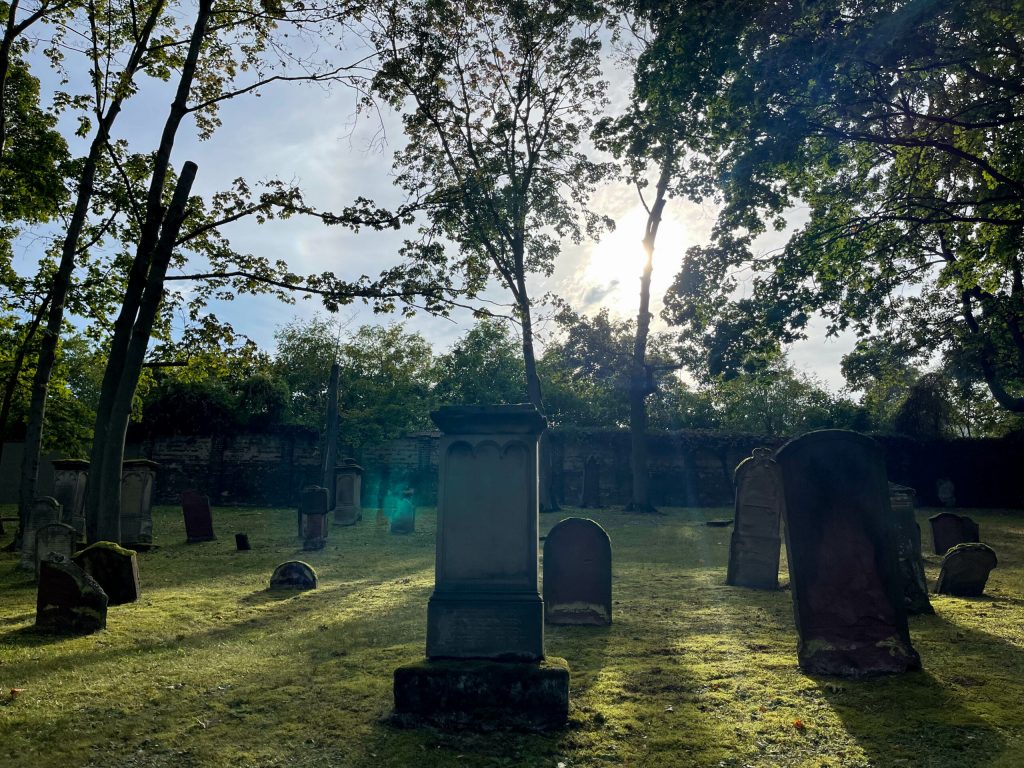
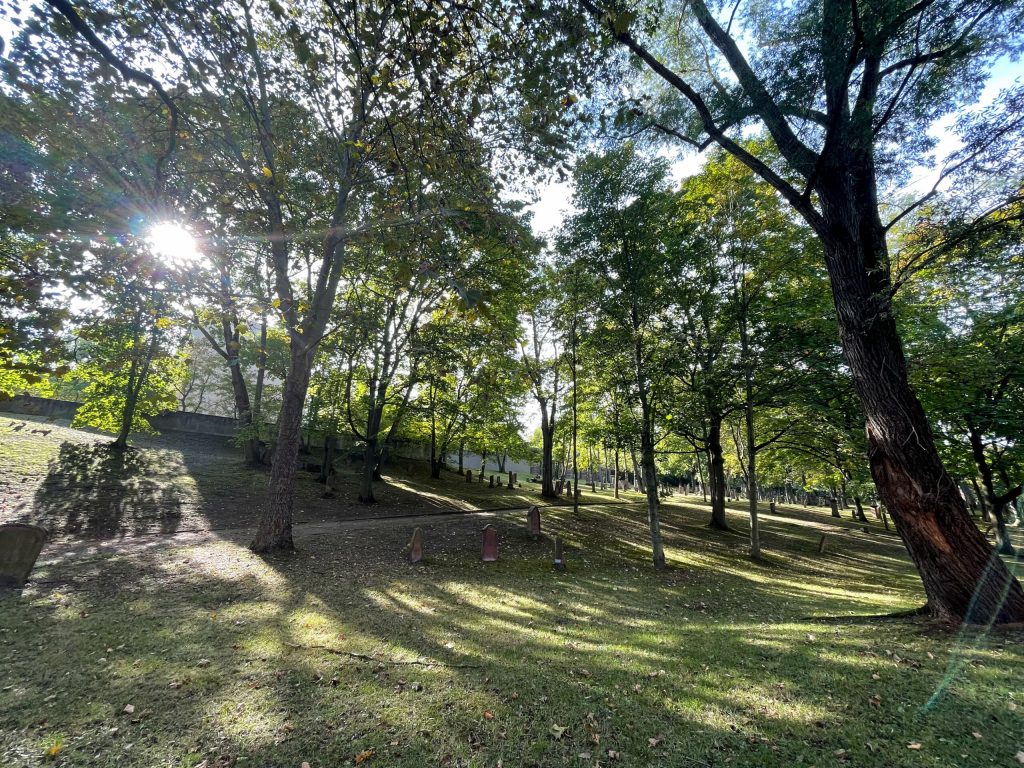
The older gravestones in the cemetery can be recognized by their simple shape. simple shape. The more playful shapes and symbols on the stones came later. later. Especially the symbols have a fixed meaning and tell something about the deceased. Thus a broken column stands for a man who died too early, or the blessing hands testify to a member of the member of the family of the temple priests.
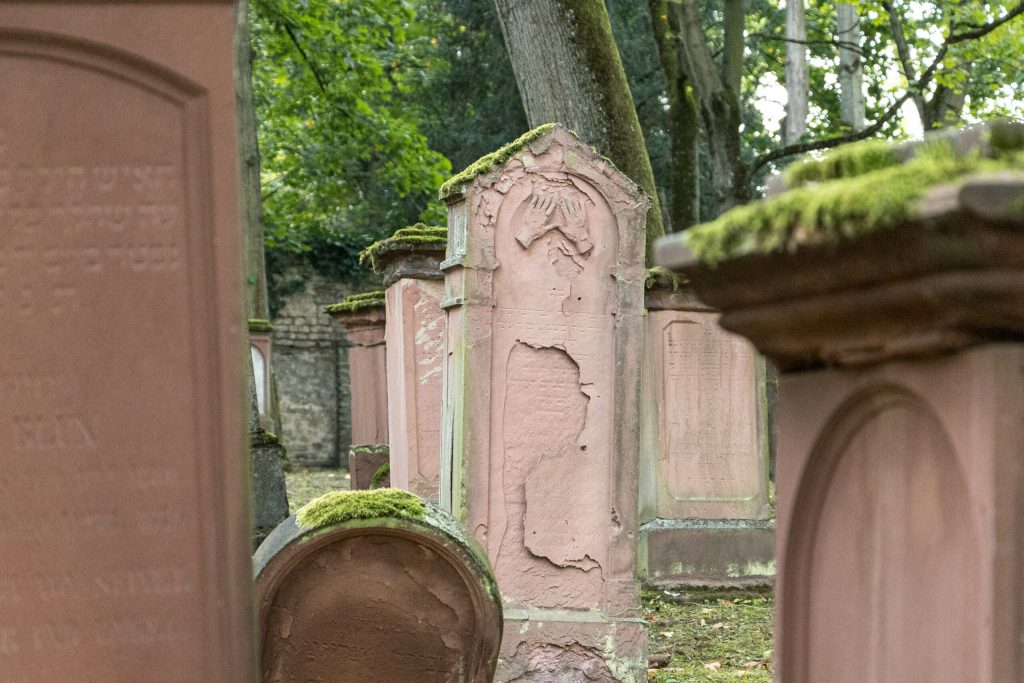
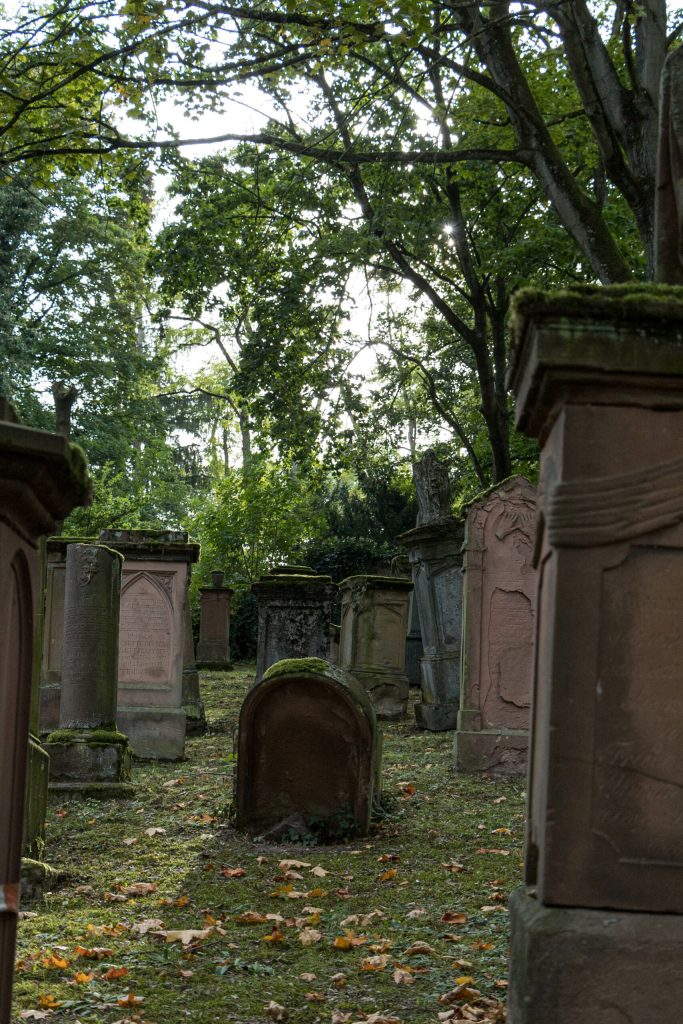
1000 moving years of Judaism in Mainz
The Jewish cemetery in Mainz clearly shows the history of the of the Jews in Mainz. Again and again, Jewish communities settled here and were were expelled again. Thus the Jewish cemetery also grew, was plundered or even sold or even sold by parts of the community itself and bought back again. At the Jewish cemetery here was 9.5 hectares in size, today only a part of this eternity remains. of this part of eternity only a fraction remains. On other parts there are houses or roads were built. In 1438 the cemetery was even and parts of the gravestones were built into buildings. These recovered and recovered stones stand today on a separate section of the cemetery, the Cemetery, the memorial cemetery. In contrast to the visitor's cemetery, over which we the gravestones in the Memorial Cemetery are not uniformly lined up and aligned. are not uniformly lined up and aligned, but stand in a jumble. This has to do with a Jewish tradition. The dead person is placed with feet facing east and the gravestone is placed at his head. Since the stones on the cemetery were placed later and not at the head of the deceased. dead, they do not point in a uniform direction.
Currently, the stones of the cemetery are still being catalogued and and documenting them, so that even after they have fallen, sunk or weathered, the to have records of the stones even after they have fallen, sunk or weathered. Likewise, many of the stones in Mainz have not yet been found again. The history of the SchUM in Mainz, just as in Worms, has not yet been fully discovered and is being continues to be written with each discovery. During a visit to the SchUM sites in Rheinhessen and in Speyer, there will always be something new from the 1000-year history of Judaism on the Rhine.
At the moment you can only visit the Jewish cemetery in Mainz with a guided tour. You can find all information about the guided tours on the website of Mainz Tourism.
The cemetery is closed on Jewish holidays and on the Sabbath every Saturday. In any case, remember that in Judaism graves are for eternity and therefore stay on the marked paths. And very important for all men: remember your headgear.
